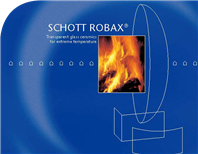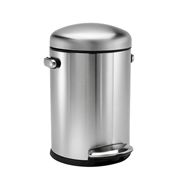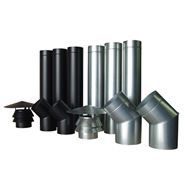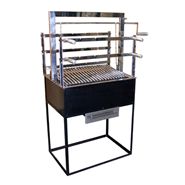Schott Robax
vidros especiais
vidros
vidro para lareira
vidro resistente ao fogo
vidros para churrasqueira
vidro cerâmica
24
6. 6. Fitting
6.1 General information The following guidelines for glass and glass ceramic apply to the fitting and
handling of ROBAX®:
• The different thermal expansion of ROBAX® and the various frame materials,
together with possible manufacturing tolerances, must be taken into account
when sizing frame and panels.
• If it is necessary to use compression fixing of the panel in the frame for design
reasons, the pressure must be applied uniformly (never unevenly or at individual
points) around the periphery of the panel.
• Non-distorting frames should be used. If slight distortion cannot be avoided,
a suitable permanently elastic gasket must be used to prevent the distortion
of the frame being transmitted to the glass ceramic panel.
• Direct contact between glass and metal (or other hard construction elements)
must be avoided. We recommend permanently elastic heat-resistant materials
such as mineral fiber materials as an insert between the glass ceramic and the
metal.
Perfection is a question of more
than just materials and design.
Correct handling is important as
well. Make sure you are always
on the safe side by complying
with the appropriate guidelines.
Schott Robax
vidros especiais
vidros
vidro para lareira
vidro resistente ao fogo
vidros para churrasqueira
vidro cerâmica
25
6.2 Frameless fitting In essence, the use of ROBAX 6. ® as frameless doors poses the danger of mechanical
stress (bending stress, impact, shock, etc.). If using ROBAX® for such an application,
please comply with the following basic points (the general information under
point 6.1 naturally applies as well):
• The weight of the panel should be distributed across rails of a sufficient size.
Stress on specific points, e.g. caused by the weight of the panel “resting” on
the screws/bushings, should be avoided. The pressure forces transferred to
the glass by the rails must be absorbed with a suitable material that is both
temperature-stable and flexible (e.g. glass-fiber cord between hinge/handle
and panel).
• Contact pressure on the panel which could lead to it bending under force is
to be avoided. This can be accomplished with the restriction of torque or a
mechanical stop limiting the screw penetration, for example.
• The closing of the door should not cause any additional pressure (leverage)
on the side of the panel mounted with a hinge.
• The hinges should not jam during closing, as the corresponding resistance
forces could be transferred to the glass during opening or closing of the door.








 Lixeira Retro 6 litros Deluxe Aço Inox
Lixeira Retro 6 litros Deluxe Aço Inox
 Complementos para lareiras
Complementos para lareiras
 Churrasqueira Premium Modelo CH-2 - Carvão com Caixa Braseiro
Churrasqueira Premium Modelo CH-2 - Carvão com Caixa Braseiro